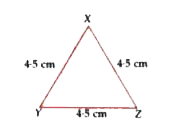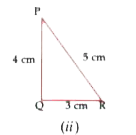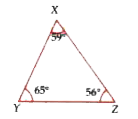A population is exhibiting genetic equilibrium. Answer the following with regard to this statement.
Name the underlying principle.
Step-by-Step Solution:
1. Identify the Concept of Genetic Equilibrium:
- Genetic equilibrium refers to a state in a population where allele and genotype frequencies remain constant over generations.
2. Determine the Underlying Principle:
- The underlying principle that describes this state of genetic equilibrium is known as the Hardy-Weinberg Equilibrium.
3. Understand the Hardy-Weinberg Equilibrium:
- The Hardy-Weinberg Equilibrium states that genetic variation in a population will remain constant from one generation to the next in the absence of disturbing factors.
4. Conditions for Hardy-Weinberg Equilibrium:
- For a population to be in Hardy-Weinberg equilibrium, certain conditions must be met:
- No mutations
- Random mating
- No natural selection
- Extremely large population size (no genetic drift)
- No gene flow (immigration or emigration)
5. Conclusion:
- Therefore, the underlying principle for a population exhibiting genetic equilibrium is the Hardy-Weinberg Equilibrium.
---
- Genetic equilibrium refers to a state in a population where allele and genotype frequencies remain constant over generations.
- The underlying principle that describes this state of genetic equilibrium is known as the Hardy-Weinberg Equilibrium.
- The Hardy-Weinberg Equilibrium states that genetic variation in a population will remain constant from one generation to the next in the absence of disturbing factors.
- For a population to be in Hardy-Weinberg equilibrium, certain conditions must be met:
- No mutations
- Random mating
- No natural selection
- Extremely large population size (no genetic drift)
- No gene flow (immigration or emigration)
- Therefore, the underlying principle for a population exhibiting genetic equilibrium is the Hardy-Weinberg Equilibrium.
Topper's Solved these Questions
- BOOK - ICSECHAPTER - EVOLUTIONEXERCISE - PRACTICE QUESTIONS (Very Short Answer Type Questions)58videos
EVOLUTION
- BOOK - ICSECHAPTER - EVOLUTIONEXERCISE - PRACTICE QUESTIONS (Short Answer Type-I Questions)18videos
EVOLUTION
- BOOK - ICSECHAPTER - ENVIRONMENTAL ISSUESEXERCISE - COMPETITION CORNER (ASSERTION AND REASON TYPE QUESTIONS (FOR AIIMS ASPIRANTS))9videos
ENVIRONMENTAL ISSUES
- BOOK - ICSECHAPTER - HUMAN HEALTH AND DISEASE EXERCISE - COMPETITION CORNER (OBJECTIVE TYPE QUESTIONS) (Assertion and Reason Type Questions (For AIIMS aspirants))28videos
HUMAN HEALTH AND DISEASE
Similar Questions
A population is exhibiting genetic equilibrium. Answer the following with regard to this statement.
Name any two factors which could upset the genetic equilibrium of the population.View SolutionA population is exhibiting genetic equilibrium. Answer the following with regard to this statement.
Explain the above statement.View Solution
Knowledge Check
- Question 1 - Select One
Name the following triangle with regards to sides :
 AEquilateral triangleBRight triangleCScalene triangleDIsosceles triangle
AEquilateral triangleBRight triangleCScalene triangleDIsosceles triangle
"A population has been exhibiting genetic equilibrium". Answer the following with regard to the above statement.
(i) Explain the above statement.
(ii) Name the underlying principle.
(iii) List any two factors which would upset the genetic equilibrium of the population.
(iv) Take up any one such factor and explain how the gene pool will change due to that factorView SolutionName the following triangle with regards to sides :
 View Solution
View SolutionName the following triangle with regards to sides :
 View Solution
View SolutionName the following triangle with regards to angles :
 View Solution
View SolutionName the following triangle with regards to angles :
 View Solution
View SolutionName the following triangle with regards to angles :
 View Solution
View SolutionWhich one of the following statement regarding BOD is true?
View Solution

